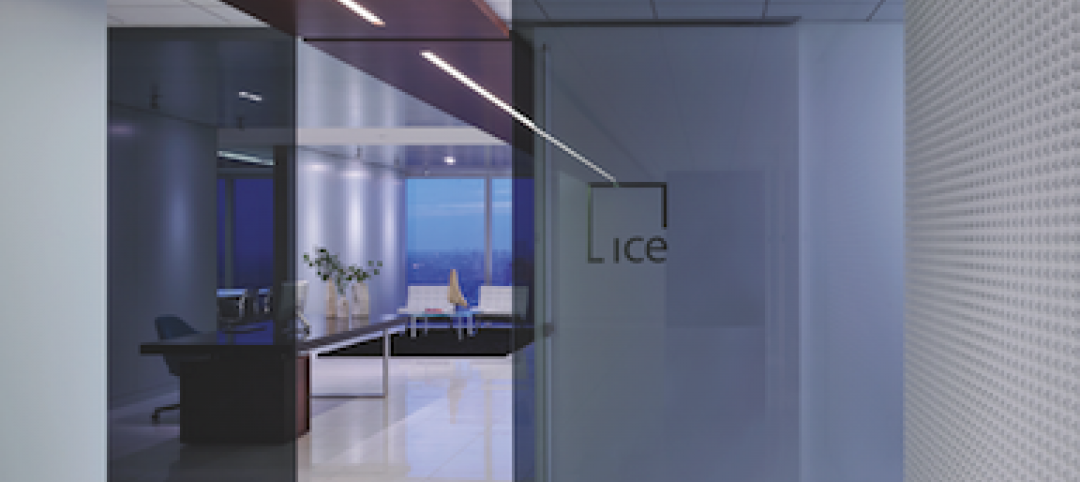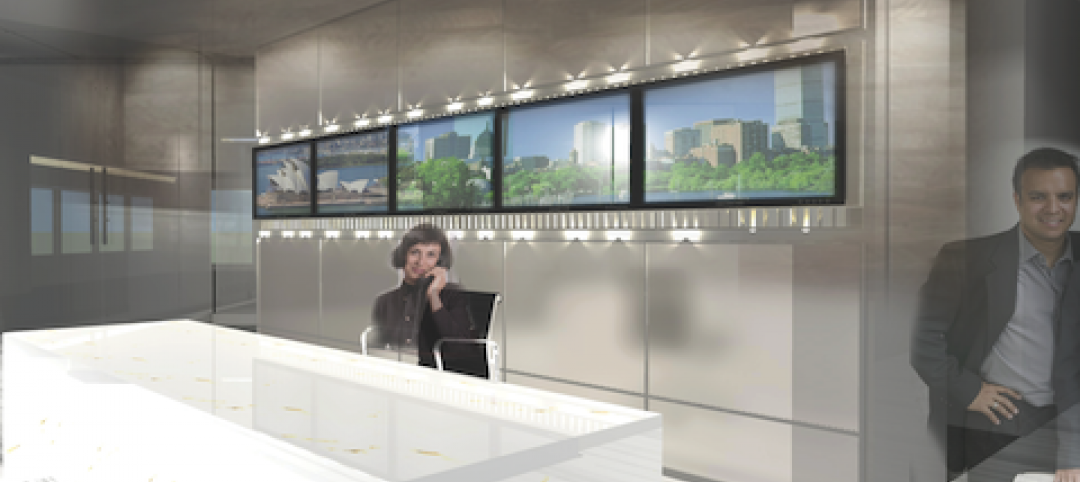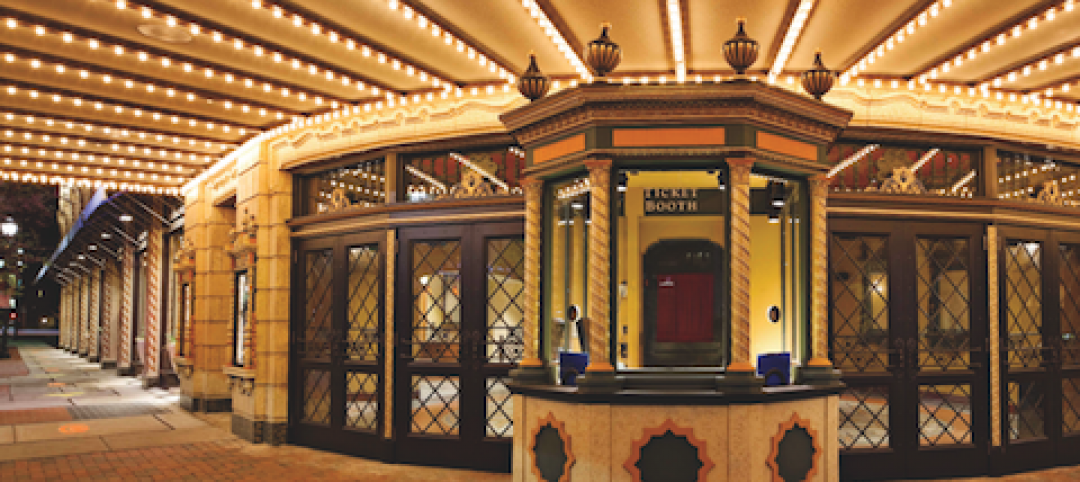New York may be home to more architectural landmarks than any city in the U.S., so when renowned architect Bjarke Ingels was commissioned by Durst Fetner to design a new apartment building along the city’s Hudson River, he chose to make a splash.
The result is VIA 57 West, an audacious, shape-shifting structure that appears as a soaring 467-foot spire when seen from the city-side of the building and a glittering metal-clad pyramid when viewed from the river.
Featuring a hybrid design that unites the traditional looks of a courtyard-block-style apartment complex and a towering Manhattan high-rise, VIA 57 West creates a striking profile on the New York city skyline and satisfies Ingels’ desire to connect residents to the outside world. To achieve that objective, the architect incorporated a variety of components, including a generous courtyard that punctures the center of the façade, open terraces that perforate the glittering metal curtain wall and oversized bay windows strategically positioned to brighten each of the building’s 709 apartments.
Utilizing Solarban® 70XL glass by Vitro Glass, the floor-to-ceiling windows in VIA 57 West contribute to an integrated energy management program that incorporates a highly efficient mechanical system, occupancy sensors for lighting and a hybrid water source heat pump system.
Carlos Amin, vice president of sales for Tecnoglass, said his company fabricated 5,000 window units from Solarban® 70XL glass in an array of shapes and sizes for the project, which he called one of the most complex he had ever worked on.
“The building faces west, so the architect was intent on specifying a product with a high solar heat gain coefficient,” he explained. “He also wanted a glass with good transparency to preserve the views.”
Formulated with the industry’s first triple-silver coating, Solarban® 70XL glass has a solar heat gain coefficient (SHGC) of 0.27 and a visible light transmittance of 64 percent in a standard 1-inch insulating glass unit. That configuration, which was specified for VIA 57 West, enables window units to block more than 70 percent of the ambient solar energy from entering the building, reducing demand for air-conditioning in the spring and summer, and enhancing the comfort and views of building occupants throughout the year.
As a glass and metal fabricator, Tecnoglass served as part of an integrated team of high-end contractors involved in meeting the building’s complex design demands. Working together, Tecnoglass, ENCLOS, Techniform and Bunting Architectural Metals fabricated, assembled and installed more than 350,000 square-feet of curtain wall; a 110,000-square-foot stainless steel slope wall; 1,200 stainless steel cladding components and 50,000 square-feet of glass-fiber reinforced concrete to create a 515,200-square-foot building envelope.
Since opening in 2016, VIA 57 West has gained numerous accolades for both its design and environmental performance. Even more important, it has added a gleaming new inhabitant to New York’s register of famous architecture while providing an oasis of comfort and sustainability to more than 700 residents and their families.
To learn more about Solarban® 70XL glass and other high-performance glass products by Vitro Glass, visit www.vitroglazings.com.
Related Stories
| Oct 13, 2010
Modern office design accentuates skyline views
Intercontinental|Exchange, a Chicago-based financial firm, hired design/engineering firm Epstein to create a modern, new 31st-floor headquarters.
| Oct 13, 2010
HQ renovations aim for modern look
Gerner Kronick + Valcarcel Architects’ renovations to the Commonwealth Bank of Australia’s New York City headquarters will feature a reworked reception lobby with back-painted glass, silk-screened logos, and a video wall.
| Oct 13, 2010
New health center to focus on education and awareness
Construction is getting pumped up at the new Anschutz Health and Wellness Center at the University of Colorado, Denver. The four-story, 94,000-sf building will focus on healthy lifestyles and disease prevention.
| Oct 13, 2010
Community center under way in NYC seeks LEED Platinum
A curving, 550-foot-long glass arcade dubbed the “Wall of Light” is the standout architectural and sustainable feature of the Battery Park City Community Center, a 60,000-sf complex located in a two-tower residential Lower Manhattan complex. Hanrahan Meyers Architects designed the glass arcade to act as a passive energy system, bringing natural light into all interior spaces.
| Oct 13, 2010
Community college plans new campus building
Construction is moving along on Hudson County Community College’s North Hudson Campus Center in Union City, N.J. The seven-story, 92,000-sf building will be the first higher education facility in the city.
| Oct 13, 2010
County building aims for the sun, shade
The 187,032-sf East County Hall of Justice in Dublin, Calif., will be oriented to take advantage of daylighting, with exterior sunshades preventing unwanted heat gain and glare. The building is targeting LEED Silver. Strong horizontal massing helps both buildings better match their low-rise and residential neighbors.
| Oct 12, 2010
Holton Career and Resource Center, Durham, N.C.
27th Annual Reconstruction Awards—Special Recognition. Early in the current decade, violence within the community of Northeast Central Durham, N.C., escalated to the point where school safety officers at Holton Junior High School feared for their own safety. The school eventually closed and the property sat vacant for five years.
| Oct 12, 2010
Richmond CenterStage, Richmond, Va.
27th Annual Reconstruction Awards—Bronze Award. The Richmond CenterStage opened in 1928 in the Virginia capital as a grand movie palace named Loew’s Theatre. It was reinvented in 1983 as a performing arts center known as Carpenter Theatre and hobbled along until 2004, when the crumbling venue was mercifully shuttered.
| Oct 12, 2010
Cell and Genome Sciences Building, Farmington, Conn.
27th Annual Reconstruction Awards—Silver Award. Administrators at the University of Connecticut Health Center in Farmington didn’t think much of the 1970s building they planned to turn into the school’s Cell and Genome Sciences Building. It’s not that the former toxicology research facility was in such terrible shape, but the 117,800-sf structure had almost no windows and its interior was dark and chopped up.
| Oct 12, 2010
Building 13 Naval Station, Great Lakes, Ill.
27th Annual Reconstruction Awards—Gold Award. Designed by Chicago architect Jarvis Hunt and constructed in 1903, Building 13 is one of 39 structures within the Great Lakes Historic District at Naval Station Great Lakes, Ill.
















